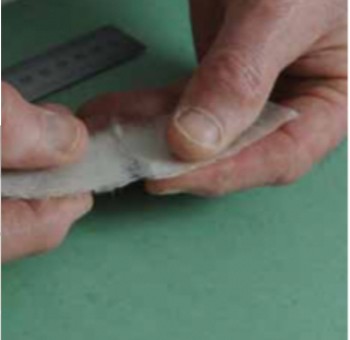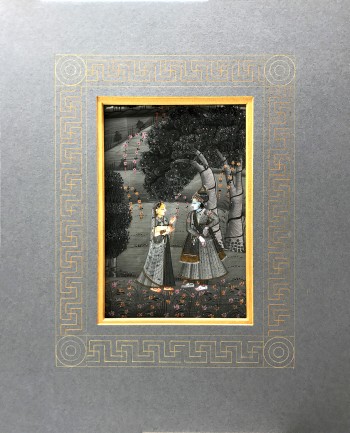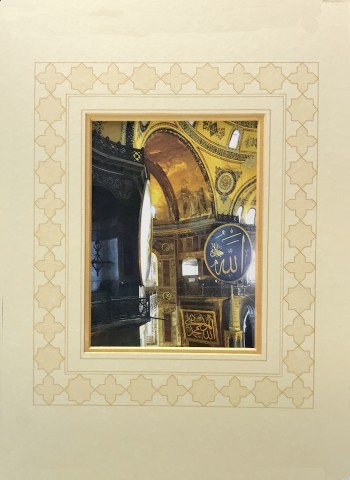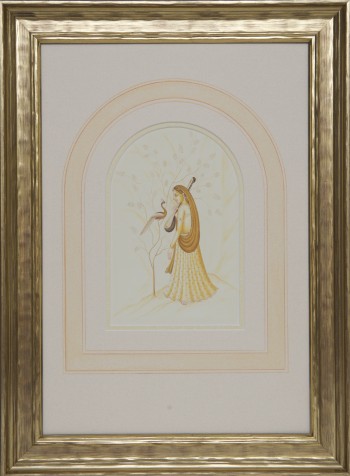
Remounting a Pahari Print
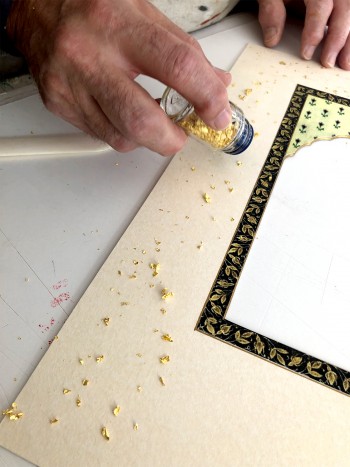
Using a Valiani CMC, ruled miles and border panels and a traditional Indian gilding technique to create a Persian/Mughal style new mount for an item of Pahari art.
In remounting this print, I wanted to include a number of different ideas and techniques, including an Arabesque/Mughal style of mount aperture, decorative panels and ruled lines, and a technique called zarafshan – ‘scattering gold’.


